You are here
Dignity and Disasters: A photo story
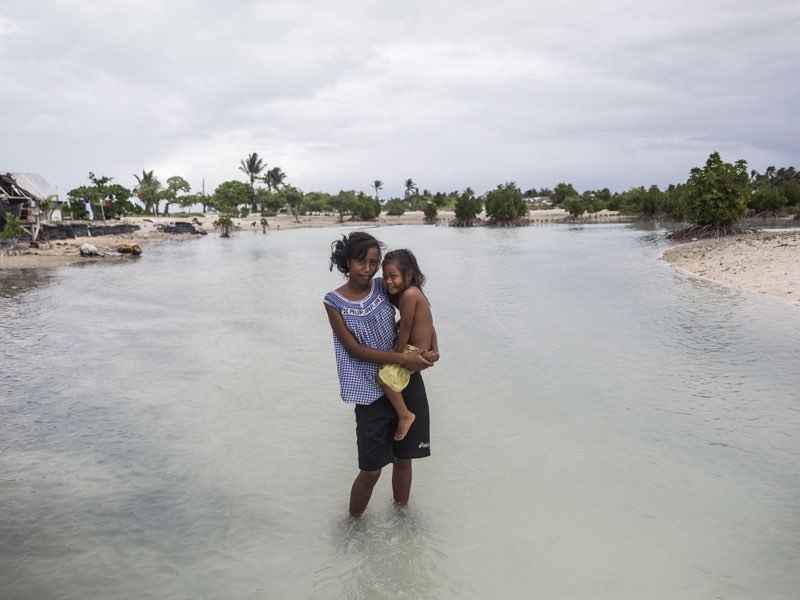
Dignity and disasters
In countries across the Asia-Pacific region, natural disasters are uprooting families, leaving women and girls most at risk. The effects of climate change are unavoidable as storms intensify and droughts leave millions vulnerable to food shocks, displacement and even violence. Then there are earthquakes, tsunamis and volcanic eruptions.
This collection of photographs takes us into some of the communities where disasters are being most acutely felt. From Bangladesh to Samoa, women are taking an active role in preparing for emergencies. By speaking up and proactively taking action, they’re helping governments and civil society plan ahead and ensure crucial supplies are on hand to help women maintain their dignity, even when disasters disrupt their lives.
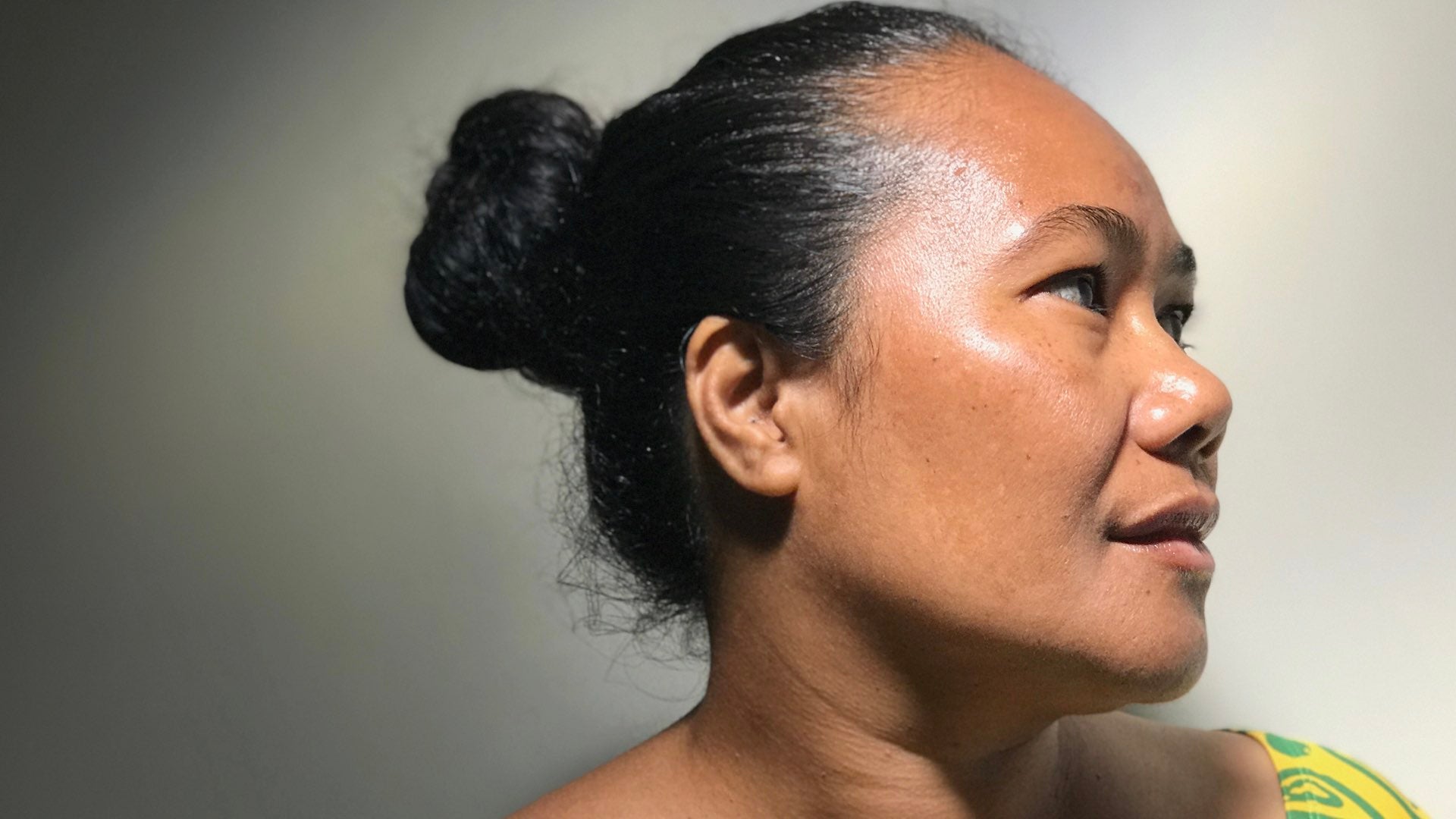
Solomon Islands: Mary works to help communities in the Solomon Islands prepare for climate change by involving women in the planning about what's needed when natural disasters hit. Mary is from a remote island in Temotu province that is more than three weeks away by sea from where she now works in the capital, Honiara. The model of prioritising women's perspectives has been adopted by other development projects and Mary is part of a network that is able to quickly deploy the dignity kits where they are needed most. Mary and her team have helped communities build clear evacuation routes and plan backup food supplies if storms or floods hit. The close consultation has built up trust in the communities and this will allow any future disaster response to reach women and girls more effectively because of this critical groundwork. @UNFPA/Rose
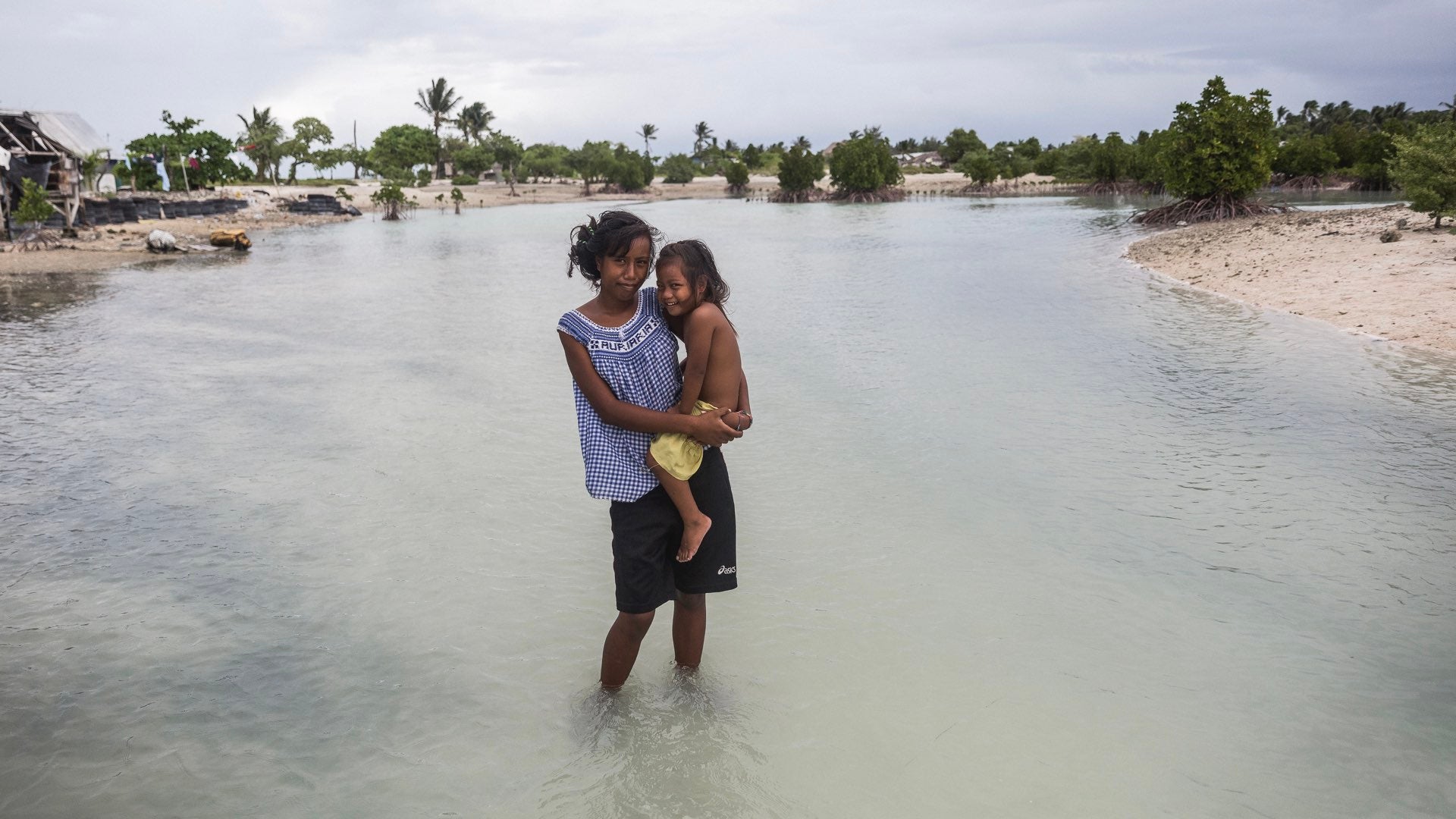
Kiribati: Taronga, 16, holds her two-year-old sister Teaborenga while standing in a flooded area in the village of Eita, South Tarawa, Kiribati, Thursday 28 January 2016. Eita is one of many localities on Tarawa atoll that regularly floods at high tide. Sea water cuts access to the main road and children sometimes have to swim or use floating devices to go to school. ©UNICEF/UN056626/Sokhin

Papua New Guinea: 19-year-old Sima Billy is pregnant and since her partner left her 6 months ago, she’s been on her own. She lives in Mirigini village in Port Moresby with her mother and she worries about the future for her baby. Sima got encouragement from a community health volunteer to go early to the hospital. With distances sometimes dauntingly far from informal settlements and the level of care uncertain, many women in Papua New Guinea don’t get the antenatal care that could save lives. Because Sima built that relationship with the midwives and doctors, she’s been taking iron tablets and eating fresh vegetables when she and her mother can afford them. @UNFPA/Rose

Indonesia: Sinta, 19, stands near her house which collapsed during the tsunami, in Pesauran Village, Cinangka District, Serang, Banten on 24 December 2018 in Indonesia. ©UNICEF/UN0267786/Wilander
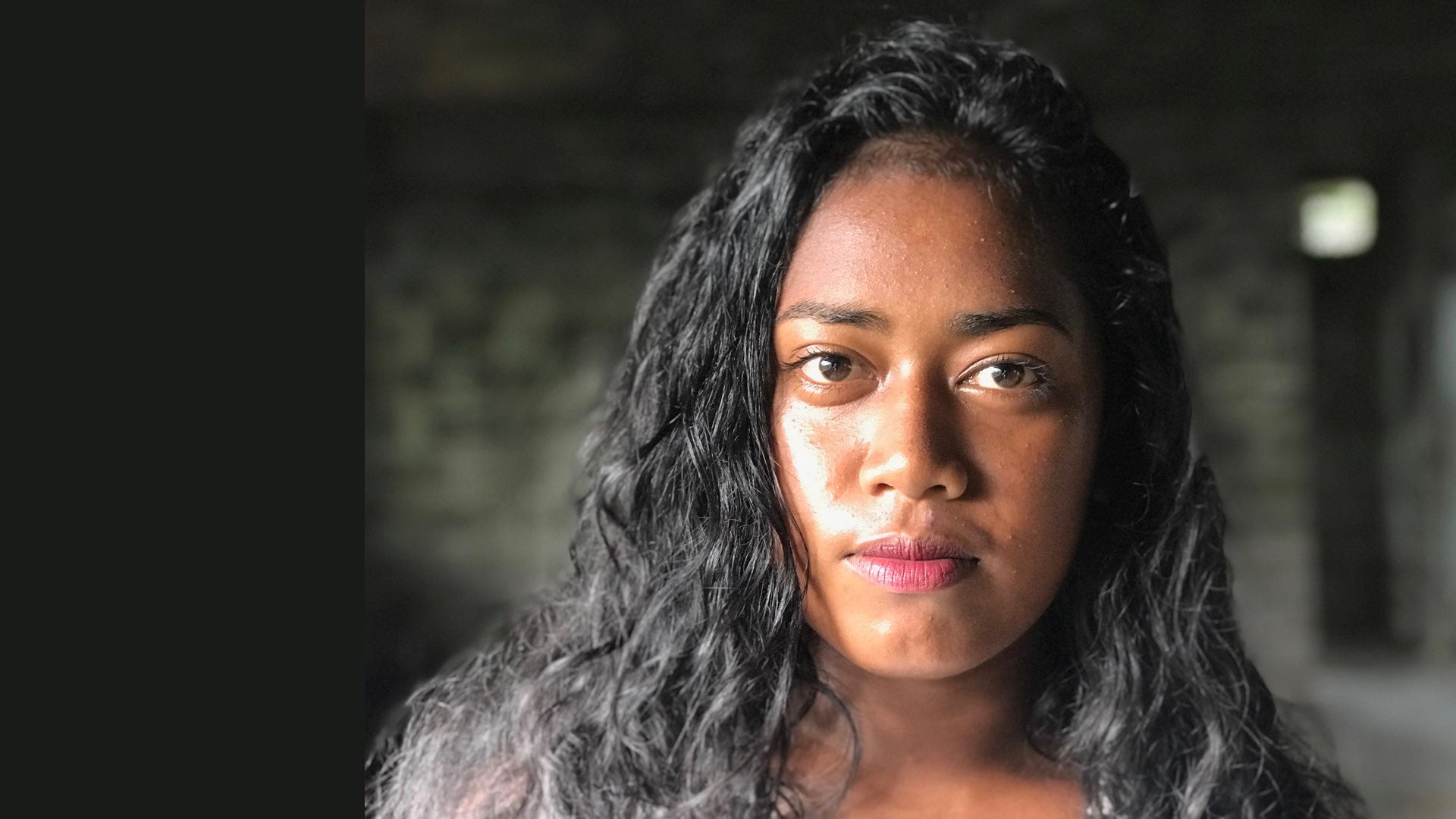
Solomon Islands: Khadil is 17 years old and she lives in White River in the Solomon Islands. In her community on the outskirts of Honiara, gender-based violence and natural disasters are tragically common so Kahdil navigates a complex set of challenges. She and her friends dance in a traditional Tambura group, but the pressures of school and family are intensified by poverty and waves of disasters that disrupt an already fragile normalcy. @UNFPA/Rose
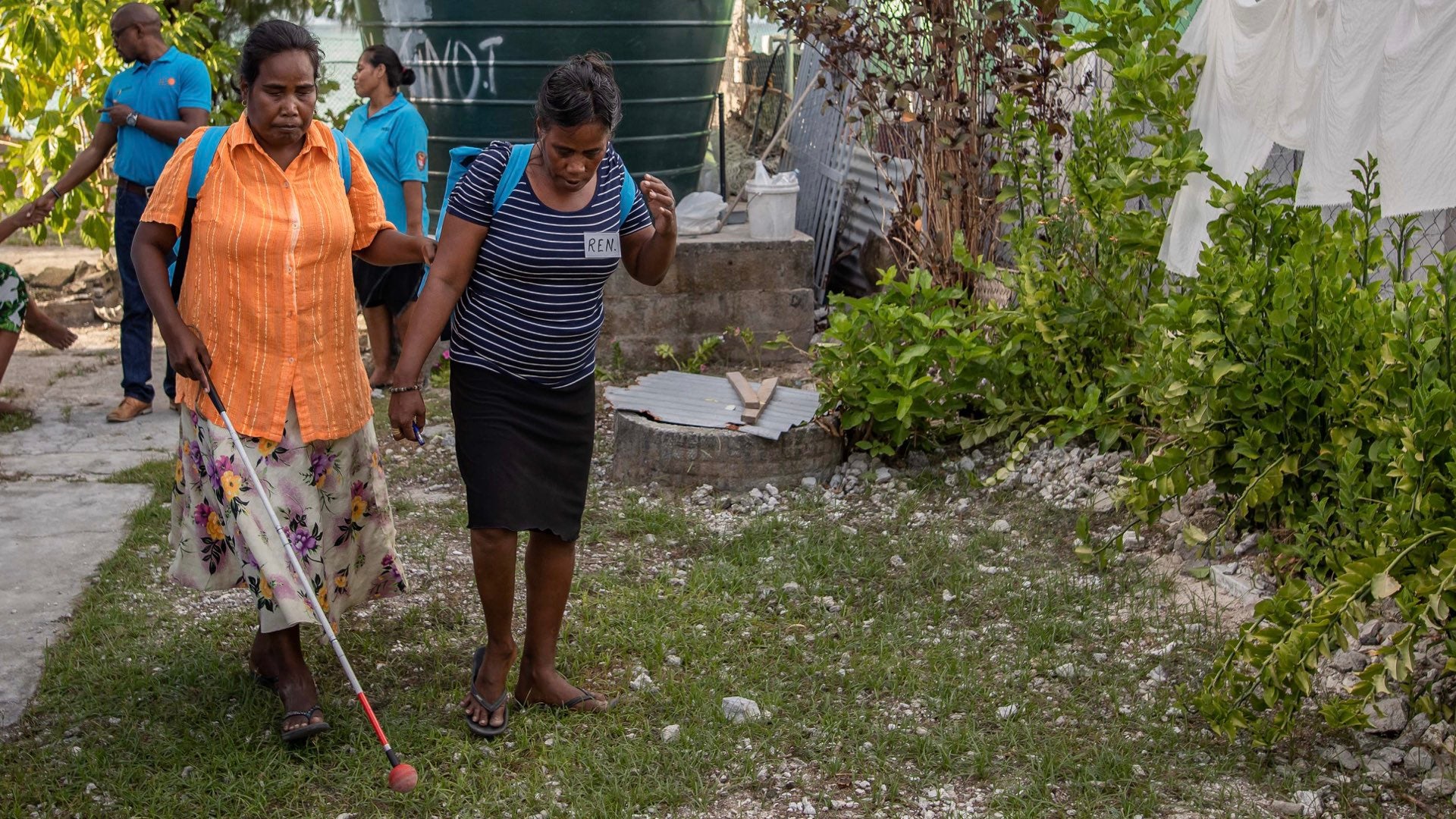
Kiribati: Access and mobility for people with disabilities is already challenging in the Pacific, but it's even harder during disasters and the chaotic aftermath. UNFPA has been able to contribute to the disater plans for countries like Kiribati by preparing kits that are adapted to the needs of people with disabilities. @UNFPA/Carly Learson
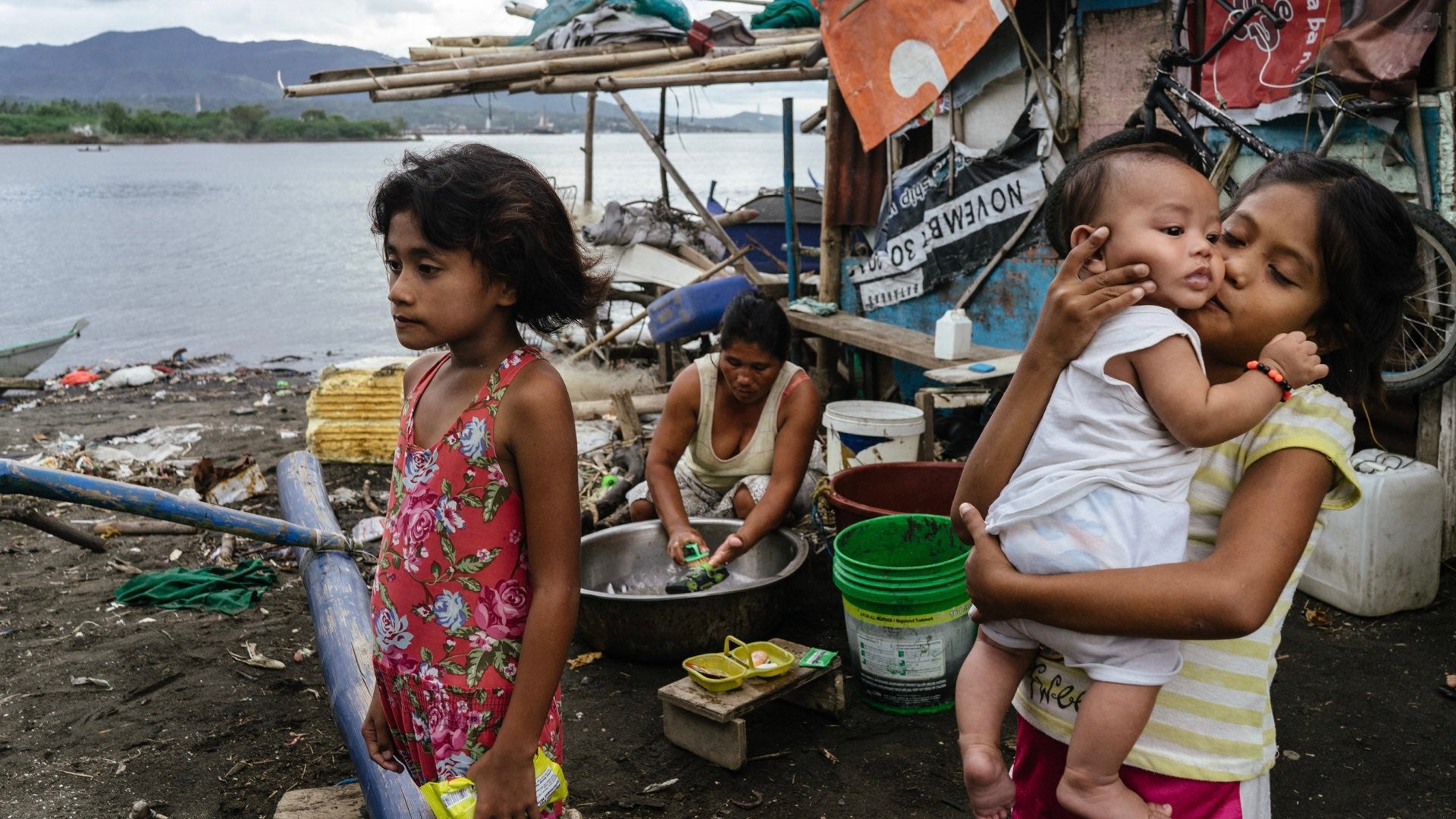
The Philippines: Badjao sisters stand in front of their makeshift home as their mother washes clothes in Wawa, Batangas. Disparagingly labelled as "sea gypsies," Badjao follow the movements of the sea rather than the borders of the land, never quite belonging to the countries in which they live. Many Badjao families like this one settled in Wawa, a mixed community of Badjao and Tagalog peoples, after fleeing from the fighting in Mindanao. What is not visible in the background is the island that used to sit across this bay, which is where these Badjao families used to live before it was swallowed up by a typhoon a few years ago, forcing these fisherfolk to relocate once more. The Badjao here have been Christianised and want to be known as "Goodjao," to escape the prejudice and marginalization that their ethnicity has historically experienced in Southeast Asia. With the Philippines the third-most vulnerable country to climate change, fisherfolk, who are the least responsible for causing the worsening climate crisis, are also the population most vulnerable to its disastrous consequences such as rising sea levels, storm surges, and coastline erosion. ©Hannah Reyes Morales
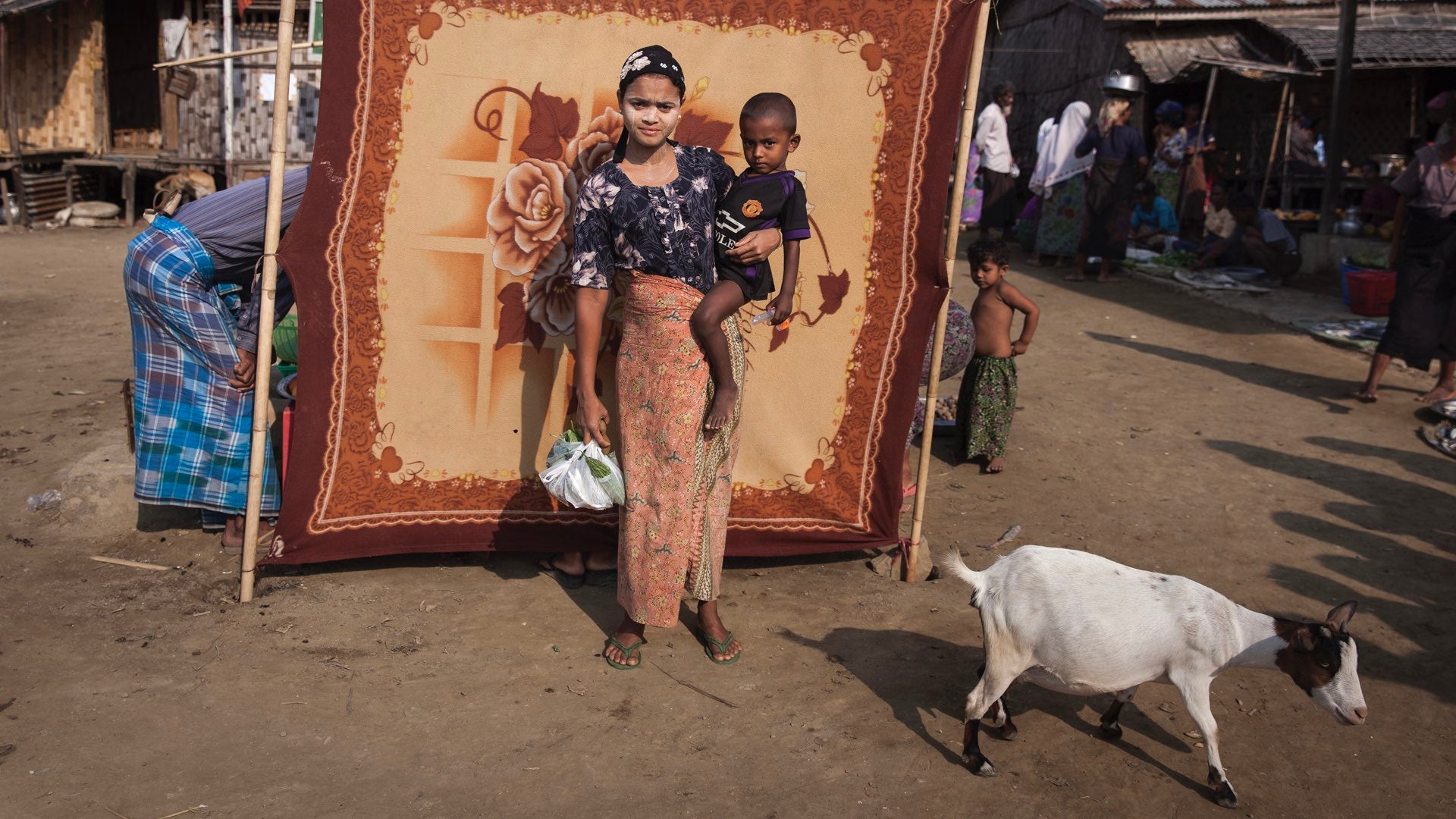
Myanmar: Khn Me Cho, 20, holds her son Min Lus Neing, 3, at the Sin Tet Maw camp for internally displaced persons in Rakhine State, Myanmar. A combination of natural disasters that Myanmar is prone to and decades of internal conflict render thousands upon thousands of people across various ethnic communities in several states perpetually vulnerable and even homeless. ©UNICEF/UN061826/Brown
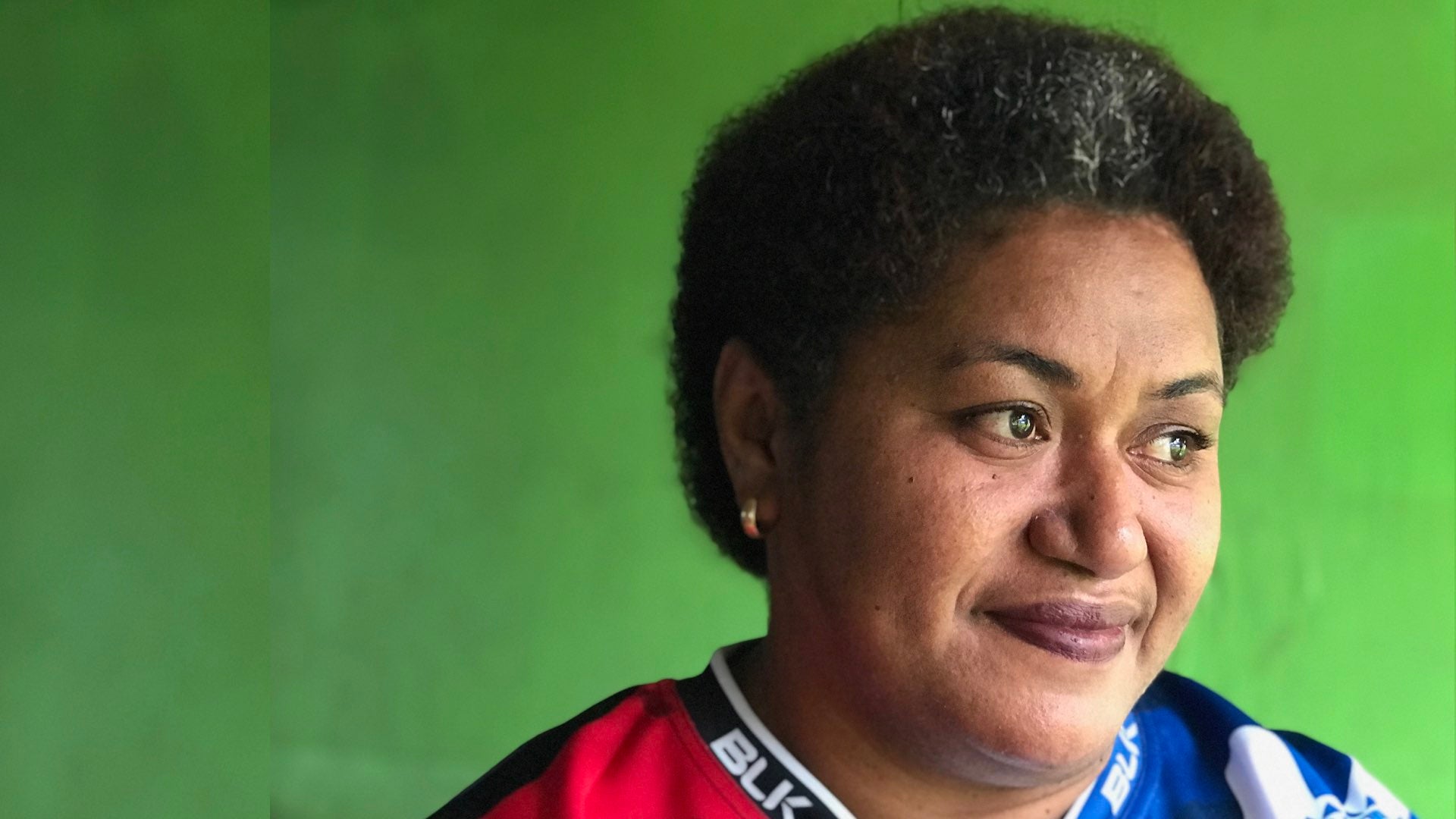
Fiji: Like every Pacific islander, Tuisalalo carries strong memories of natural disasters and big cyclones. She was 13 when Cyclone Kina devastated her community of Levuka in Fiji in 1993. “Mum and I could feel the swaying of trees,” she recalls about the night the storm hit. “Strong wind. There was a huge tamarind tree at the back of our house. So Mum and I had to move to our lounge because she said if that tree would fall down it can hit into our bedroom. So that night I can vividly remember we did not go to sleep at all.” Tuisalalo says the hardest part is always after the disaster when there is no clean water and the scale of the mess. She’s learned valuable lessons she teaches her children. “It was a huge experience for me during a natural disaster. So after that disaster we have to be aware of what might happen next.” @UNFPA/Rose

Kiribati: With hospitals often struggling with the challenges of funding, regular flooding events and a host of public health problems, maternal health is an important investment that can be overlooked and under-resourced. UNFPA's engagement with government health partners creates a dialogue about essential equipment and planning for emergencies. @UNFPA/Carly Learson
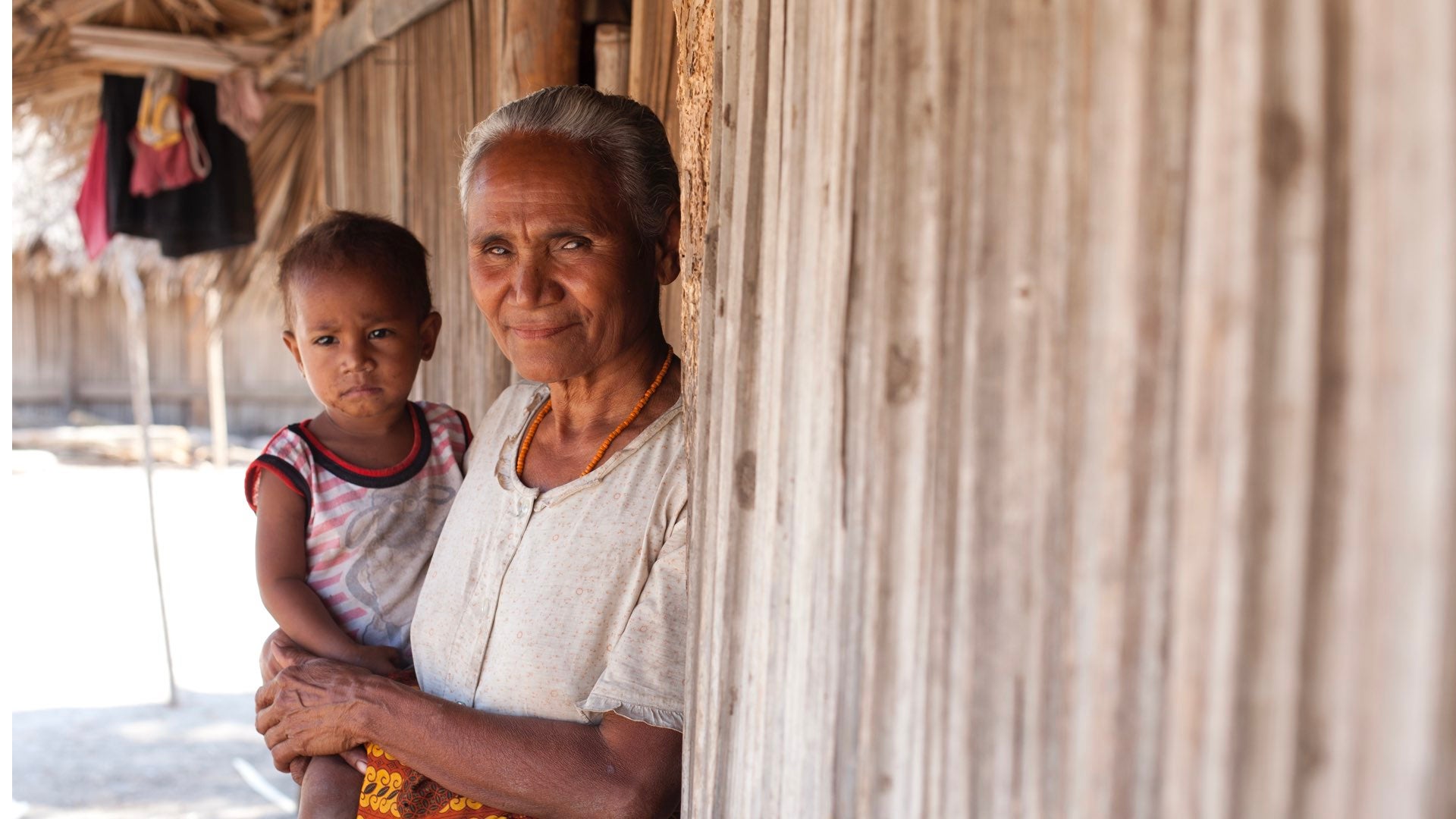
Indonesia: Close relationships with community health networks in Indonesia has helped UNFPA develop specially adapted kits for the elderly. “Through the conversations about dignity, we heard that the elderly were facing similar challenges (as women and girls) but for a range of reasons,” says Elisabeth Sidabutar, UNFPA Indonesia’s Humanitarian Program Analyst. “They needed different clothing, supplies and specialized advice about their health.” The innovation in delivering targeted support for vulnerable members of the community has been replicated in other disaster-prone countries in the Asia-Pacific region. @UNFPA
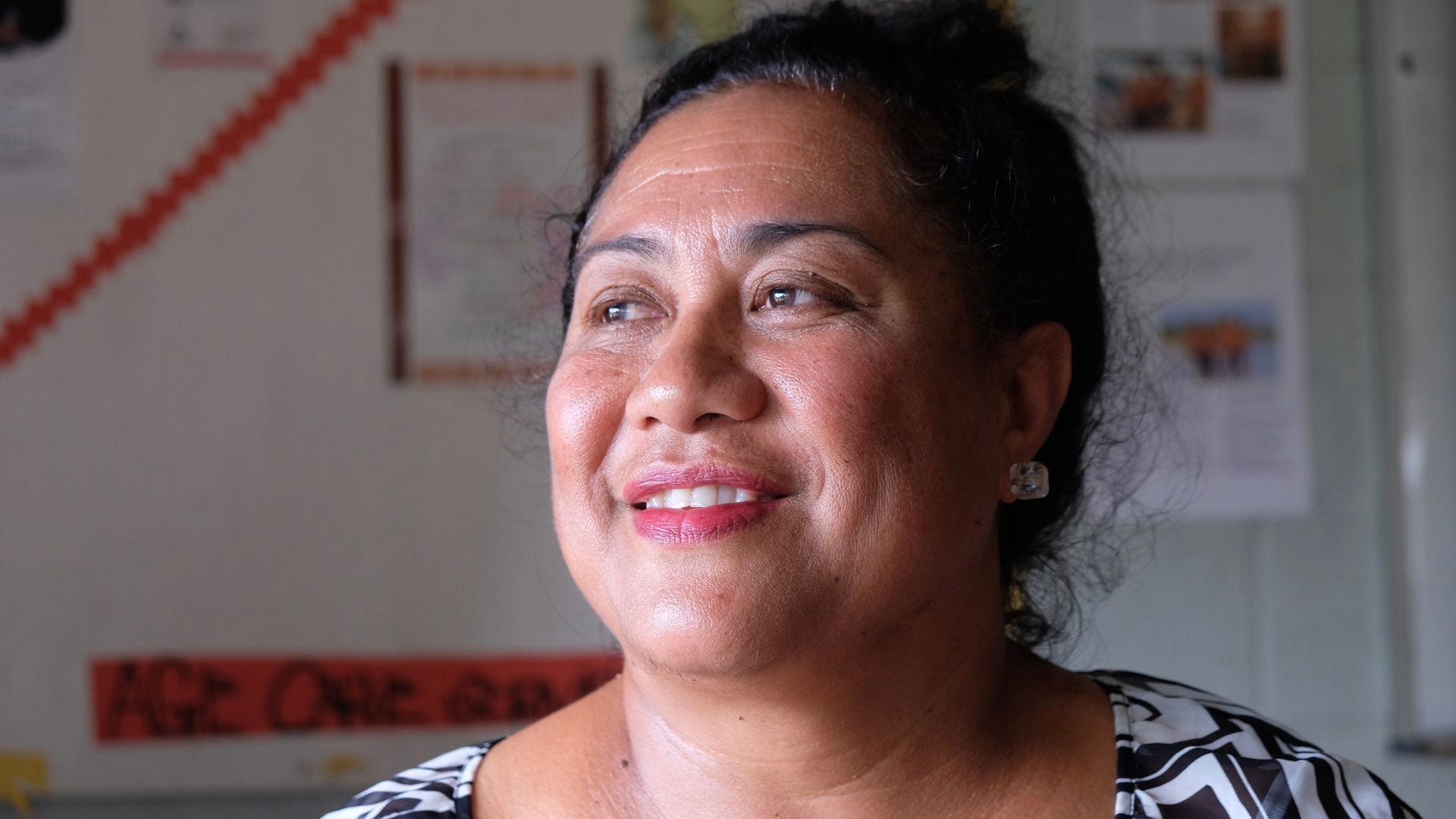
Tonga: Manu works with Ma’a Fafine Moe Famili to support vulnerable mothers and children in Nuku'alofa, the capital of the Kingdom of Tonga. Manu and her team of community health workers go the extra mile to ensure people with disabilities get the support they need, from physical therapy to a ride to the hospital for health checks. Ma’a Fafine Moe Famili uses a uniquely Tongan, community-focused approach to inclusive early childhood development and women’s support, and it’s groups like this that play an essential role in disaster relief planning because of their intimate knowledge of how to reach vulnerable people with disabilities. @UNFPA/Rose

Without adequate clothing, menstrual supplies and hygiene items, women and girls may be unable to access basic services, including humanitarian aid. That’s why UNFPA distributes its trademark Dignity Kits during disasters, to reduce vulnerability and connect women and girls to information, support and services. Dignity Kits contain underwear, basic clothing, sanitary napkins, toothbrushes, toothpaste, soap and laundry powder, as well as information on the services that are available and how to access them.
The Asia-Pacific region is the most disaster-prone in the world. In order to strengthen preparedness and build resilience, UNFPA’s Asia-Pacific Regional Office manages a flagship programme, the Regional Prepositioning Initiative, supported by Australia, which targets the most disaster-prone countries in the region.
Since 2016 and as of September 2020, the Regional Prepositioning Initiative has reached nearly 140,000 direct beneficiaries with more than US$ 1.6 million worth of essential supplies to meet the sexual and reproductive health needs of women and girls and to prevent and respond to gender-based violence in 54 emergencies across 15 countries.
Prepositioning has dramatically improved UNFPA’s humanitarian response in Asia and the Pacific in terms of speed, quality and efficiency. Prepositioning has also strengthened UNFPA’s reputation and reliability as a humanitarian actor, provided new opportunities to advocate for measures to address sexual and reproductive health and gender-based violence during humanitarian responses, and helped to build trust with governments and other partners.
These outcomes assist UNFPA’s work in relation to the humanitarian, development and peace-building nexus.
UNFPA is thankful to the Government of Australia, through its Department of Foreign Affairs and Trade, for supporting the Regional Prepositioning Initiative.
To find out more, please go to: https://asiapacific.unfpa.org/en/rpi
